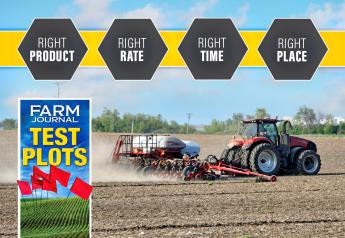ASFMRA: Farm Managers Share Thoughts on the 2018 Farm Bill and NAFTA
On the Farm Bill
The farm bill is the single biggest piece of legislation that affects the livelihoods of farmers throughout the U.S., and there are concerns about how politicians will design the new one for 2018.
Howard Halderman, AFM, president of Halderman Farm Management, shares his perspective. “My No. 1 concern is the potential reduction of support for the crop insurance programs. These are critical to the future of U.S. agriculture for operators, landowners and lenders. If the support is reduced further or the cost for coverage goes up significantly, then the operator is damaged financially, which leads to lower rents, lower land values, more loan repayment problems and many rural communities suffering financially due to the ag economy struggling,” he says. “Farmers cannot control their weather or price for the most part. Crop insurance is a risk-mitigation tool that allows them to take some risk off the table at reasonable price levels. A low-cost food supply is maintained here by keeping U.S. farmers solvent.”
Dave Englund, AFM, senior vice president of farm and ranch management operations for Farmers National Company, agrees. “The biggest challenge we face with the farm bill negotiations is maintaining the support we have for crop insurance,” he says.
“We don’t need to have subsidies cut nor have caps put on producers for them. The current crop insurance program with ‘harvest price protection’ works well and has provided Congress with the ability to not have to pass emergency spending for disasters.”
Dennis Reyman, AFM, ARA, with Stalcup Ag Service Inc. addresses lenders: “Any budget cuts need to minimize the impact on the farm safety net. We are at a time when lenders need a reliable safety net to continue providing adequate financing to producers. Educating legislators from non-farming districts on the need for crop insurance and other programs is key to achieving a solid farm program.”
Farm managers also have questions and concerns about splitting nutrition assistance and the farm bill into two separate bills. The Supplemental Nutrition Assistance Program (SNAP) is under scrutiny, and reform is expected; how it fits in with the new farm bill is really the question.
Reyman shares his thoughts. “Since it happened the last time, the odds are higher that it will happen again. I do not think most want this to occur due to the support needed from urban legislators to pass the farm program side. The turnover of legislators from the last farm bill negotiation was greater than most realize.”
Englund agrees with Reyman. “This is basically the only way we can get the farm bill passed since rural representation is so small,” Englund notes.
On The North American Free Trade Agreement
Washington wants to give the agreement (NAFTA) a massive overhaul, but is that good for agriculture?
“If the revisions are tolerable for all parties and our ag trade continues as before, then no major changes to our ag economy,” Halderman says. “If there are major changes, Mexico and Canada will buy their ag commodities from other sources, and we’ll be negatively impacted long-term. Congress needs to consider all ag issues from a global perspective.”
Englund and Reyman also say they believe a renegotiation will take place in the future; however, they anticipate NAFTA will not be canceled as all three countries recognize the benefits of having a trade deal. As Reyman says, “While renegotiating trade deals is likely to provide some bumps in the road, if done correctly over the long term, they should be beneficial to agriculture.”
On Their Biggest Concern Today?
Reyman: “Keep trade flowing, so we can export our surplus production.”
Halderman: “Farm bill and trade. It appears environmental regulation is status quo, so these two items are the largest concerns for the next year or so.”
Englund: “The high cost of inputs and dropping commodity prices that are affecting producers today. We are on the edge of some serious financial issues unless commodity prices go up and input prices either stay the same or go down.”







